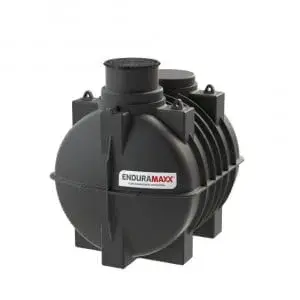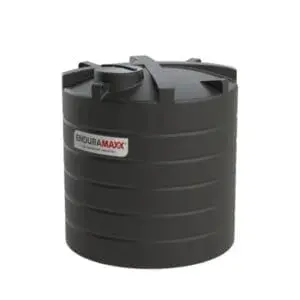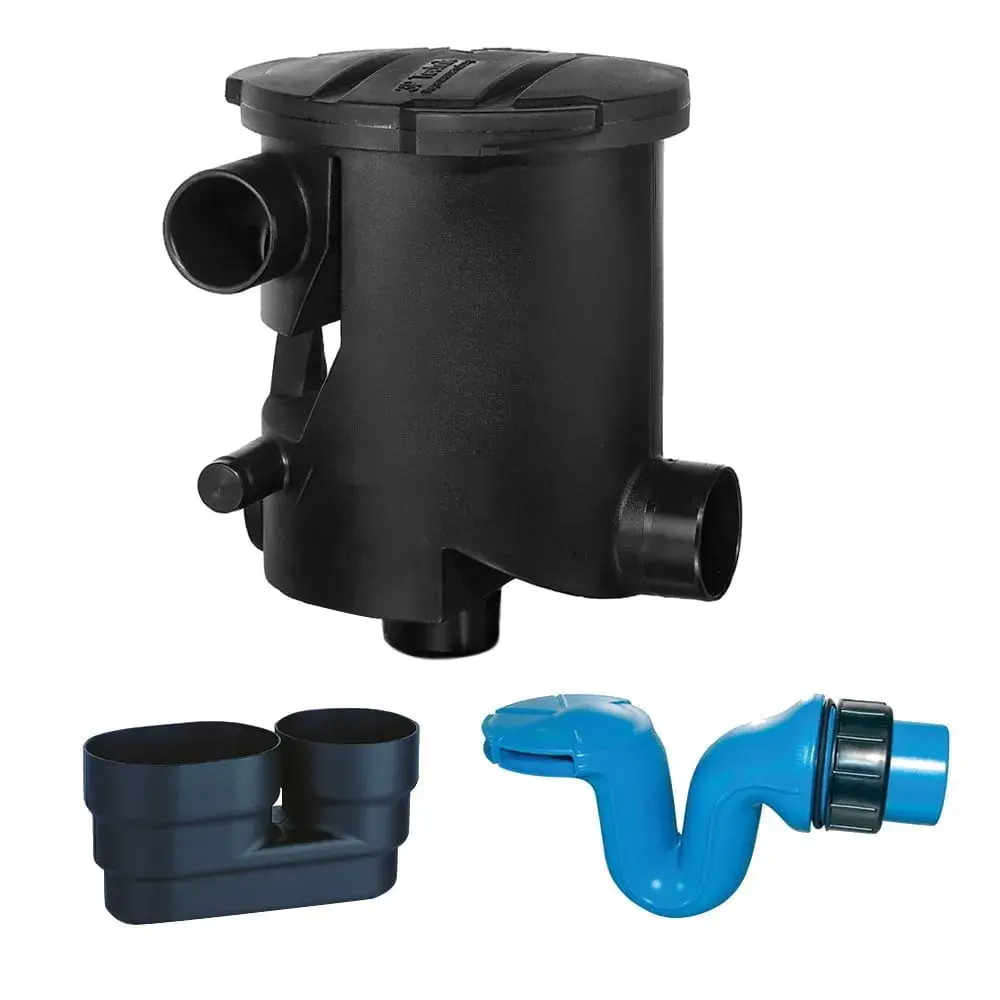Effluent & Wastewater Treatment Processes are required for converting and treating of water which is no longer needed. Wastewater can be full of contaminants including bacteria, chemicals, and other toxins and treatment. These contaminants need to reduced to acceptable levels to make the water safe for discharge back into the environment.
At Enduramaxx we work with many effluent treatment system designers and installers supplying tanks for systems that can improve the overall performance of wastewater stream.
Dissolved Air Flotation (DAF)
DAF (Dissolved Air Flotation) used in industries including the food industry, meat industry, road tanker washing, paper mills and water treatment.
What is DAF?
Dissolved Air Flotation (DAF) systems are designed to remove suspended solids, biochemical oxygen, and oils and greases from wastewater streams. Contaminants are removed using a dissolved air-in-water solution produced by injecting air under pressure into a recycle stream of clarified DAF effluent. This recycle stream is then combined and mixed with incoming wastewater in an internal contact chamber. The dissolved air comes out of the solution in the form of micron-sized bubbles that attach to the contaminants.
The bubbles and contaminants rise to the surface and form a floating bed of material that is removed by a surface skimmer into an internal hopper for further handling.
DAF Sludge Storage, balance & buffer holding tanks
DAF Sludge Storage, balance & buffer holding wastewater tanks can be used for a variety of purposes. The most common application is the blending and homogenization of highly concentrated primary, secondary or digested sludge. Various solutions are used to mix the sludge itself based on the volume and type of sludge with the dosed thickening chemicals. These tanks are in throughout the wastewater/sludge treatment process.
DAF Sludge Storage Tanks
- Used on Dissolved Air Flotation [DAF] water treatment systems for high volumes of wastewater containing a low percentage of solids. – More details here
Sludge Balance Tanks
- Balance tanks are used where the flow rate of wastewater varies greatly or where its composition, strength or temperature varies sufficiently. – More details here
Sludge Buffer Holding Tanks
- Buffer tanks used to hold sludge from the thickener before delivery to the filter press. – More details here
Clarification
Clarification Treatment is widely used in many industries including paper industry, aggregates and sand washing, vegetable washing and processing. Clarifiers work on the principle of gravity settling, the heavier suspended solids settle in the clarifier to the centre for the collection of sludge.
What Is the Clarification Process?
Primary (mechanical) treatment/Clarification is designed to remove gross, suspended and floating solids from wastewater. It includes screening or a weir to trap solid objects and sedimentation by gravity to remove suspended solids. This level is sometimes referred to as “mechanical treatment“, chemicals are often used to accelerate the sedimentation process.
Primary treatment through a Clarifier / Clarification Tanks can reduce the BOD (biological oxygen demand) of the incoming wastewater by 20-30% and the total suspended solids by some 50-60%. Primary treatment is usually the first stage of wastewater treatment cone tanks make ideal primary treatment tanks. Clarifier water treatment plants in industrialised countries start with primary treatment and have added other treatment stages as wastewater load has grown.
Primary Treatment Through Sedimentation
The primary treatment of sewage is the removal of floating and settleable solids through sedimentation. Primary clarifiers reduce the content of suspended solids as well as the pollutant embedded in the suspended solids. As a result of a large amount of reagent necessary to treat domestic wastewater so preliminary chemical coagulation and flocculation are generally not used. The remaining suspended solids being reduced by following stages of the system. However, coagulation and flocculation can be used for building a compact treatment plant (also called a “package treatment plant”), or for further polishing of the treated
Sludge De-watering
The sludge treatment is necessary to reduce and ameliorate the sludges, which are produced within the biological wastewater treatment. When looking at a sludge from a treatment process there could be fewer solids in it than there is. A typical DAF plant sludge will be approximately 5% solid or 95% water equating to 19 tonnes of water and 1 tonne of solids from a 20-tonne load of sludge.
There are a lot of costs saving opportunities hereby increasing the solids content to reduce total material removed from the site by tanker.
Process of Sludge Treatment
This process comes in two stages:
1) Making a good liquid-solid separation of the sludge so that the water is ready to separate effectively from the solids by means of Biological or chemical treatment.
2) Physical separation of the liquid and the solids so through means of equipment such as filter press’s so as much water can be “squeezed” out of the sludge and disposed of to drain.
Water Disinfection & Sterilisation
Water disinfection is the removal, deactivation or killing of pathogenic microorganisms in water result in the resulting in termination of growth and reproduction. One of the effects of pathogenic microorganisms in drinking water can be illnesses. Sterilisation is a process related to disinfection, like taking a course of antibiotics, during the sterilisation process, harmful and harmless microorganisms are removed.
Enduramaxx Effluent & Wastewater Treatment Processes
Enduramaxx works with installers of Effluent & Wastewater Treatment Processes and installations we work with many installers and water treatment companies. Our range of tanks, bunds, from 50-litre dosing tanks to 30,000-litre sludge tanks are customisable with fittings and flanges to take pipework from other equipment. litres. For more details on these please get in touch today.
Posts By Topics
- Blog (303)
- Chemical Storage Tanks (118)
- Chemical Dosing Tanks (114)
- Chemical Tanks (114)
- Water Tanks (58)
- Rainwater Harvesting Tanks (43)
- Vertical Rainwater Tanks (31)
- Vertical Storage Tanks (31)
- Cone Bottom Tanks (19)
- Conical Cone Tanks (18)
- Rainwater Harvesting (17)
- Water Bowsers (15)
- Horizontal Tanks (14)
- Potable Water Tanks (13)
- Farming (9)
- Case Studies (8)
- Industrial Storage Tanks (7)
- Liquid Fertilser Storage Tanks (6)
- WRAS Approved Potable Tanks (6)
- Wine and Beer Production (6)
- Horizontal Transport Tanks (5)
- Microbrewery (5)
- Rainwater (5)
- Category 5 Break Tanks (4)
- Cider Production (4)
- Mixer Tanks (4)
- Molasses Tanks (4)
- Polyethylene tanks (4)
- Rainwater Filter Kits (4)
- SPECIALIST & BESPOKE TANKS (4)
- Bunded Tanks (3)
- Slimline Tanks (3)
- WRAS Approved (3)
- Clarification Tanks (2)
- Crosslinked Polymer Tanks (XLPE) (2)
- Fertiliser Tanks (2)
- Sump Tanks (2)
- Tank Installation (2)
- Water Butt (2)
- underground water tanks (2)
- ACCESSORIES & FITTINGS (1)
- ATV & UTV SPRAYING UNITS (1)
- Above Ground Effluent Tanks (1)
- Bespoke Tank Frames (1)
- Category 5 Turret (1)
- Caustic Soda Tanks (1)
- Closed Top Bunded Tanks (1)
- Craft beer (1)
- Effluent Tanks (1)
- Enduramaxx (1)
- Ferric Chloride Tanks (1)
- Fire Safety Regulations (1)
- Fire Sprinkler Water Storage Tanks (1)
- Industrial Water Tank (1)
- Open Top Bunded Tanks (1)
- Open Top Cone Tanks (1)
- Open Top Vertical Tanks (1)
- Polyethylene Potable Water Tanks (1)
- Polyvinylidene Fluoride (PVDF) Tanks (1)
- Polyvinylidene Fluoride Tanks (PVDF) (1)
- Pressure Washers (1)
- Pro Series Spot Sprayers (1)
- RWH (1)
- Sodium Hydroxide Storage Tanks (1)
- Sprayer Fill-up Tanks (1)
- Uncategorised (1)
- liquid fertiliser tank (1)
Sign up to the newsletter
enduramaxx.marketing
Related Posts
Enduramaxx Water Treatment Tanks: Our Core Products
Enduramaxx now lists its water treatment mixer, storage, and treatment tank range online, including...
Three Main Steps of the Wastewater Treatment Process | Enduramaxx
Three Main Steps of the Wastewater Treatment Process, – Wastewater treatment of wastewater is...
Effluent & Process Water Treatment Consultancy & Support
Effluent & Process Water Treatment Consultancy & Support, Enduramaxx, wastewater treatment, process...
Related Products
From £1,080.00 inc. VAT
£900.00 exc. VAT
From £1,344.00 inc. VAT
£1,120.00 exc. VAT
From £768.00 inc. VAT
£640.00 exc. VAT
£480.00 inc. VAT
£400.00 exc. VAT





